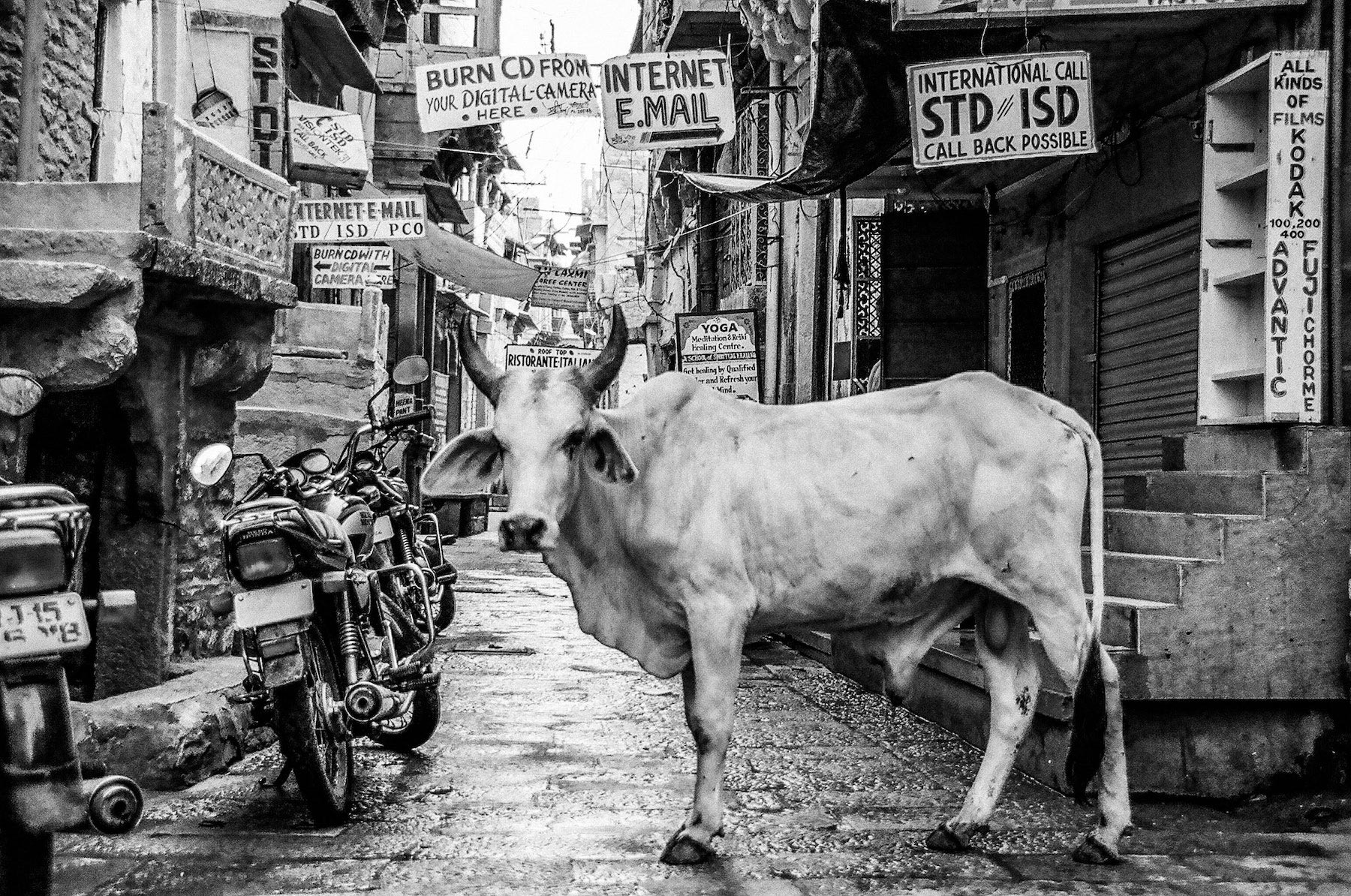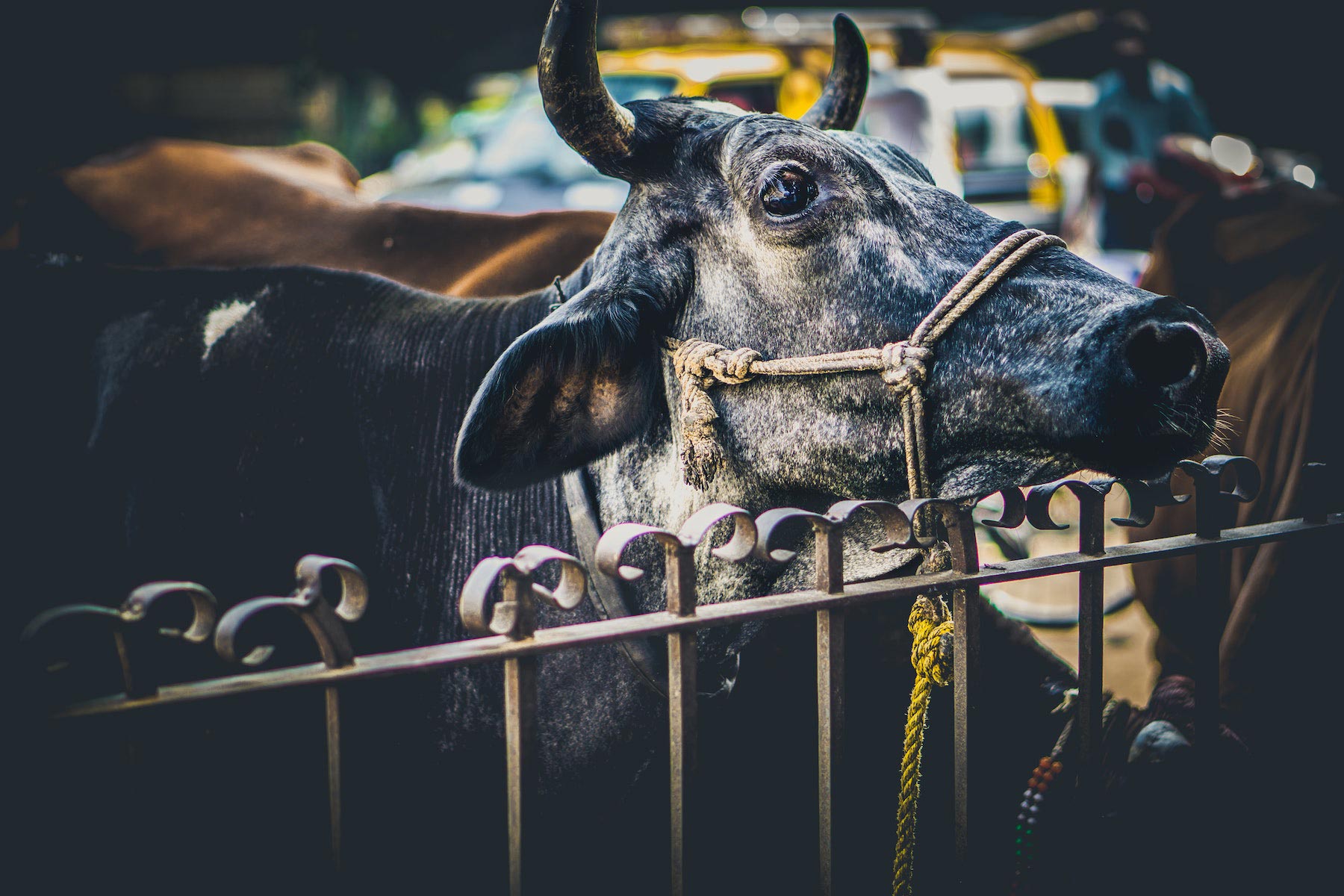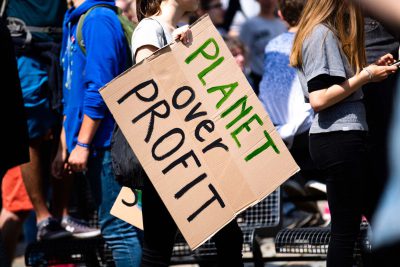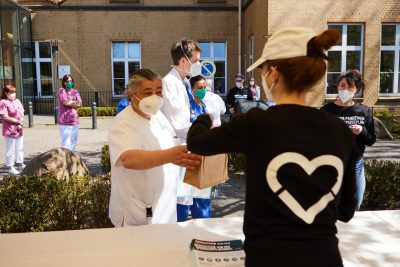India is the largest producer of milk in the world, and dairy is so much more than just a foodstuff. It connects to religion and politics, provides a livelihood for millions of rural households, and has a deep cultural significance. And yet, at the heart of this industry are practices so cruel and so shocking that milk consumption would surely change if people only knew the suffering involved.
History Of Dairy Industry In India
One reason for its cultural importance in India today is that milk has been central to livelihoods and diet for so very long.
Early Period
Milk production in India dates back around 8,000 years to when zebu cows and buffaloes were first domesticated, for ploughing as well as for milk. By the Vedic period (1500 – 500 BCE) dairy had become an intrinsic part of the diet, not just via the consumption of milk itself but also through eating ghee, buttermilk and curds.
Modern Period
Since independence from colonial rule, India’s dairy industry has grown rapidly. Operation Flood was launched by the government in 1970 to scale up milk production across the country and support rural communities. It led to the White Revolution, and within 30 years, this effort had doubled the amount of milk available. It was launched by Verghese Kurien who founded Amul, a vast dairy co-operative that is today owned by 36 lakh (3.6 million) milk producers.

How Is Milk Used In India?
Milk is a key dietary component for many people, but it is also of particular importance to Hindus, and in Ayurvedic medicine.
Cuisine
Cuisine is highly variable from region to region and although milk and dairy products are used in cooking all over the country, they are most commonly used in dishes in Northern India. Paneer, ghee and yogurt are all common ingredients, sauces are often creamy in the Mughlai tradition, and desserts are also based on cream or ghee.
Religion
Lord Krishna, a Hindu deity, is the god of compassion, tenderness and love, and remains one of the most widely revered divinities in India. As a boy, he was a cow herder, known for being mischievous, and would steal the butter he loved so much from neighbors.
In Hinduism, dairy is considered to have purifying qualities. Ghee may be used in lamps for rituals and milk is also used to bathe idols. And in New Delhi in 1995, there were reports of sacred statues of Ganesha drinking milk, which was widely believed to be a miracle.
Medicine
Dairy is often used In the medicine of Ayurveda, as it is believed to have many varied benefits including supporting immunity, promoting recuperation after illness and feeding our cells, tissues and organs. Cows’ milk is used to treat headaches and nausea while ghee is massaged into joints to relieve pain from arthritis.
Is The Indian Dairy Industry Cruel?
Every commercial dairy industry around the world is cruel for the simple reason that cows do not just produce milk. They only do so when pregnant in order to feed their calf. The dairy industry does not take a little milk from cows who naturally fall pregnant. No, cows are impregnated – which in India may be done by inexperienced farmers using non-sterile equipment – with first the calves being stolen from their mothers, and then their milk being stolen too.
All over the world, when cows are too old to produce milk, they are likely to be trucked to slaughter.

Why Is The Dairy Industry In India Bad?
Most cows used for their milk are secured with ropes through their pierced noses, often so tightly they embed in the flesh. Out of 451 dairies that FIAPO investigated across the country, almost 80 percent of them kept cows on hard floors which leads to lameness.
Because of the reluctance to kill cows, male calves of milk-producing females are often turned out onto the streets to fend for themselves. When not producing optimal milk yields, the females may be turned out, too and there are an estimated five million stray cows in India today. These poor animals eat whatever they can find, which is often garbage. Karuna Society for Animals & Nature, based in Andhra Pradesh, regularly removes up to 70 kilos of plastic rubbish from the stomachs of stray cows.
More than 5,000 shelters exist to care for stray cows. These gaushalas may mean well but in reality conditions can be even worse than on farms. For example, in Rajasthan, 250 workers at the government-run Hingonia gaushala went on strike and within two weeks, 500 cows had died from starvation. A later investigation found that between January and July 2016, 8,122 cows died at the same place due to poor conditions and upkeep. Today, the gaushala has 15,000 cows, many of whom are used for milk and therefore made to reproduce, increasing the number of cows still further.
Because slaughtering cows is illegal in many states, and disapproved of in others, unwanted cows are often just allowed to starve to death.
Adulteration And Food Safety
Food adulteration is the adding of undeclared products to a food item often to bulk it up and increase profit margins. It is a dangerous practice. Chalk may be added to salt, for example, or sawdust to coriander and brick powder to ground chili. A 2018-2019 Food Safety Standards Association of India (FSSAI) report revealed that 28 percent of all food samples it tested were adulterated.
Milk is commonly adulterated. The National Milk Safety and Quality Survey 2018 found milk contaminated with hydrogen peroxide, detergents and urea. A 2019 survey of 2,880 samples in New Delhi found that milk and other dairy-based foods were the most adulterated food products, with 15 samples deemed to be unsafe. And in 2020, 85 percent of branded milk sold in Maharashtra was found to be tainted.
Environmental Impact
Cows are a significant problem for our environment. It’s not their fault, of course, it’s all because humans have bred so many of them. They are one of the leading contributors to agricultural emissions, which drive climate breakdown. Cows eat many more calories in food than are returned in their milk, making them an inefficient way to feed a growing global population. They are also key polluters of waterways. In 2019, The Delhi Pollution Control Committee closed down 31 dairy farms in the city for causing water pollution, while citing 2,700 more.
Cattle Offerings
While cows are considered sacred in Hinduism, buffaloes—who are also used for their milk—are not. At some temples, buffaloes and other animals may be sacrificed. Just over the border in Nepal is the largest animal sacrifice ‘festival’, Gadhimai, where thousands of buffaloes and many more goats, are slaughtered. Investigations into this event show some of the most appalling suffering as animals are hacked at, with some taking up to 40 minutes to die.

Indian Industry Facts And Statistics
Use Of Buffaloes
In India, around half the milk produced comes from buffaloes, who are treated the same as cows – impregnated, and their young taken away so the milk can be consumed. In fact, almost all packaged milk sold in the country is a mix of both cow and buffalo milk. However, since buffaloes are not considered sacred, they are slaughtered after their milk production declines.
Cattle Cross-breeding Programmes
Worryingly, the Indian dairy industry has focused on cross breeding Indian cows with high-producing foreign breeds like Holstein Friesian and Jerseys. The mothers trying to give birth to these bigger babies suffer enormously, including with pelvic fractures, severe nerve damage and other serious injuries.
Processing
The slaughter of cows is illegal in many states, and so they may be trucked long distances into another state or country for ‘processing’. The journey is so gruelling – no rest, no break, no food for three to four days, that 10-15 percent of cows don’t survive the journey.
A 2017 Hindustan Times article says: “People transporting them pinch the animals’ genitals to force them to move, rub chilli powder into their eyes to distort their vision, and break their tails to make them submissive. At slaughterhouses and cattle farms, animals are not stunned before being butchered. They are skinned alive.”
Dairy Products
India’s dairy industry has grown consistently since the White Revolution of the 1970s, and the country has been the world’s leading producer and consumer of dairy products since 1998. Most dairy is sold as liquid milk but it is also sold as curd, whey, yogurt, buttermilk, lassi, butter, cheese, paneer, cream, ice cream, sweet condensed milk and dairy sweets.
Consumption
In 2020, India consumed more cows’ milk than any other country, drinking more than 81 million metric tons. This is particularly strange when you consider that 60 percent of Indians are lactose intolerant.
How Big Is The Dairy Industry In India?
Around 80 million rural households are engaged in milk production, which means the industry is huge but still traditional and fragmented. The signs show that demand for milk is still growing, so either efficiencies must be made or the number of cows and buffalo will grow, too.
How Many Dairy Farms Are There In India?
There are around 80 million, though some may have just one or two cows, whereas others are much larger and more intensive.
Which Is The Largest Dairy Industry In India?
The Gujarat Cooperative Milk Marketing Federation, known as Amul, is the largest dairy company. It began as a small local cooperative and has grown to become a nationally renowned cooperative taking milk from 3.6 million producers across the country.
What Can You Do To Help?
The best way to prevent the suffering of cows and buffaloes, and to end their environmental impact is to stop consuming beef and milk. Switching to plant-based varieties of milk, yogurt and paneer is a simple step we can all take.

Conclusion
All over the world, animals suffer horrifically in the dairy industry – and all for a product we do not need, and are likely to be intolerant to. Switching to plant-based alternatives allows us to keep our traditions and culture, while also making a compassionate choice that is good for our health, animals and the planet.



